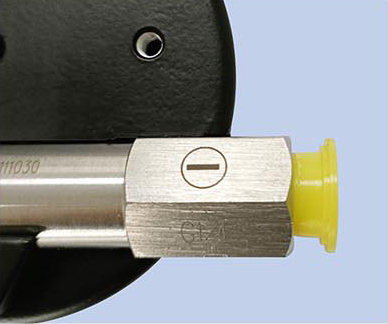
Nov . 04, 2024 15:50 Back to list
Metallic Diaphragm Pressure Gauge Applications and Service Guidelines for Optimal Performance
Understanding Metallic Diaphragm Pressure Gauge Service
Pressure gauges play a pivotal role in a vast array of industries, from manufacturing to petrochemicals and food processing. Among the various types of pressure gauges available, metallic diaphragm pressure gauges are particularly esteemed for their durability, accuracy, and versatility. This article aims to explore the service aspects of metallic diaphragm pressure gauges, including their design, applications, maintenance, and troubleshooting.
Design and Working Principle
Metallic diaphragm pressure gauges function based on the deformation of a metallic diaphragm in response to pressure changes. The diaphragm, typically made from high-quality stainless steel or other robust materials, deforms under pressure, causing a resultant movement that translates into a reading on the gauge's dial. The primary advantage of this design is its ability to withstand harsh environments and measure a wide range of pressures, making it suitable for both high and low-pressure applications.
The construction of the diaphragm gauge also contributes to its resistance to shock and vibrating conditions, which can often impact the performance of other types of gauges. They are less susceptible to damage from overpressure situations, making them a preferred choice for applications that involve pulsating pressures, aggressive media, or varying temperatures.
Applications
Metallic diaphragm pressure gauges find usage in various industries. In chemical processing, they assist in monitoring pressure levels of corrosive fluids since their materials can be selected to resist chemical attack. In oil and gas applications, they are crucial in ensuring that pressure levels are maintained within safe limits to prevent leaks and ruptures.
Other applications include
- Food and Beverage Industry They ensure that pressure levels in processing and packaging systems are optimal, contributing to product quality and safety. - Pharmaceuticals In sterile environments, metallic diaphragm gauges help monitor critical pressure levels without contamination risk. - Water and Wastewater They play a vital role in monitoring system pressures in treatment plants, ensuring compliance with safety and functionality requirements.
Maintenance
metallic diaphragm pressure gauge service

Regular maintenance of metallic diaphragm pressure gauges is essential for ensuring their accuracy and longevity. The frequency and type of maintenance depend on several factors, including the operating environment, pressure range, and the nature of the process fluid being measured. Here are some best practices for maintaining these gauges
1. Visual Inspection Regularly check for any signs of corrosion, wear, or physical damage. This includes ensuring the gauge's connection points are secure and leak-free.
2. Calibration Periodically calibrate the gauge against a known standard to ensure its accuracy. This is especially crucial for gauges used in critical applications where precision is non-negotiable.
3. Cleaning Depending on the fluid in use, it may be necessary to clean the diaphragm and the gauge housing to prevent buildup that could affect performance.
4. Environmental Protection If the gauge is located in a harsh environment, consider protective covers or enclosures to shield it from dust, moisture, and extreme temperatures.
Troubleshooting
Despite their robust design, metallic diaphragm pressure gauges can experience issues over time. Common problems include
- Damping Loss of movement or stickiness of the diaphragm can lead to incorrect readings. This might require inspecting for fluid contamination or physical obstruction. - Leakage If a leak occurs, it could indicate a failure at the diaphragm or mounting. Identifying the source and replacing damaged sections is crucial. - Zero Drift If the gauge fails to return to zero when not under pressure, recalibration or replacement may be necessary.
In conclusion, metallic diaphragm pressure gauges are integral components in numerous industrial applications, thanks to their reliability and performance in challenging conditions. By understanding their design, applications, and maintenance needs, users can ensure optimal service and prolong the lifespan of these essential instruments. Regular maintenance and timely troubleshooting are vital for achieving accuracy and safety in pressure measurement, ultimately enhancing operational efficiency.
-
High-Precision 5 Valve Manifold Differential Pressure Gauge Suppliers
NewsApr.29,2025
-
High-Precision Diaphragm Vacuum Pressure Gauges Manufacturers & Quotes
NewsApr.29,2025
-
Omega Differential Pressure Gauges High Accuracy & Durability
NewsApr.28,2025
-
Low Pressure Differential Pressure Gauges Precision Solutions & Quotes
NewsApr.28,2025
-
Digital Diaphragm Pressure Gaauge Precision Measurement & OEM Quotes
NewsApr.28,2025
-
Differential Pressure Gauge China Price High-Accuracy & Best Quotes
NewsApr.28,2025
